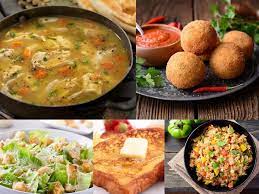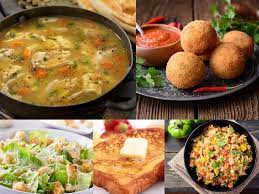In today’s world, where food waste is a growing concern, learning to reuse leftover food is not only cost-effective but also environmentally friendly. The idea of using leftovers isn’t a new concept, and in fact, it has a rich history dating back centuries. In this blog post, we will explore the importance of reusing leftover food and its history, as well as some Dishes that can be made using Leftover Food.
Origin of Leftovers
The idea of using leftovers can be traced back to ancient times when people had to make the most of their food resources. In traditional cultures, it was common practice to use all parts of the animal or plant and to waste nothing. For example, in medieval Europe, leftover bread was turned into bread pudding or used to thicken soups and stews. In India, leftover rice is used to make dishes like fried rice and biryani. And in Japan, leftover rice is often used to make onigiri or rice balls.
In the Middle Ages, leftovers were often used as an ingredient in new dishes, and this tradition continued throughout history. During World War I and World War II, leftovers were used to feed soldiers and civilians due to food shortages.
As societies became more industrialized and food production became more efficient, the practice of using leftovers began to decline. In modern times, we often have an abundance of food, and leftovers are sometimes viewed as undesirable or even a burden.
History of the Reuse of Leftover Food
During times of war and hardship, the reuse of leftover food became a necessity. In the United States, for example, during World War II, the government encouraged citizens to practice “Victory Gardening” and to conserve food by using leftovers creatively. Recipes were published in newspapers and magazines to help homemakers find new ways to use their leftover food.
Even today, many families and individuals reuse leftover food out of necessity. In some parts of the world, food waste is a serious issue, and using leftovers is seen as an important way to conserve resources and reduce waste.
Leftover Food is Called…
The term “leftovers” is a modern term used to describe food that remains uneaten after a meal. Also In the United States, leftover food is often referred to as “leftovers” or “leftover food. However, in many cultures, leftovers are simply considered a food that can be used in another dish or meal. In some cases, the leftover food is given a new name or used in a different context, such as using leftover rice to make fried rice. Also in the United Kingdom, for example, leftover food is sometimes called “slops” or “swill.” In Japan, leftover food is referred to as “keshigomu” or “erabi.”
What to Do with Leftover Food Waste
One of the biggest challenges with leftover food is figuring out what to do with the waste. According to the USDA, food waste is the single largest component of municipal solid waste in the United States. When food is wasted, it ends up in landfills, where it produces methane, a potent greenhouse gas.
To reduce food waste, it’s important to find ways to use up leftovers. If you have leftover vegetables, for example, you can use them to make vegetable soup or a stir-fry. If you have leftover meat, you can use it to make a sandwich or a stew. And if you have leftover bread, you can turn it into croutons or breadcrumbs.
In addition to finding ways to use up leftovers, it’s also important to compost food waste. Composting is a process that breaks down organic material into a nutrient-rich soil amendment. By composting food waste, you can reduce the amount of waste that ends up in landfills and create a valuable resource for your garden.
Health Benefits of Leftover Food
Using leftovers can have several health benefits. For one, it can help you save money on your grocery bill since you’re making the most of the food you already have. Additionally, using leftovers can help you eat a more varied diet, since you’re not always starting from scratch with new ingredients.
Using leftovers can also help you reduce food waste, which is good for the environment. And since you’re not wasting food, you’re also not wasting the resources that went into producing that food, such as water and energy.
Importance of the reuse of leftover food
The reuse of leftover food has been an important practice for centuries, and with good reason. It helps to reduce food waste and saves money, while also providing tasty and nutritious meals. In today’s world, where food waste is a significant problem, learning how to make the most of our leftovers is more important than ever. Here are some reasons why reusing leftover food is so important:
- Reducing food waste: According to the United Nations, around one-third of all food produced globally goes to waste. By reusing our leftover food, we can help to reduce this waste and make better use of the resources that go into producing our food.
- Saving money: By reusing leftover food, we can also save money on our grocery bills. We don’t have to buy as much food, and we can make use of ingredients that might otherwise go to waste.
- Tasty and nutritious meals: Leftover food can be transformed into delicious and nutritious meals, often with just a few simple tweaks. This means we can enjoy tasty food without having to spend a lot of time or money on cooking.
- Supporting sustainability: By reducing food waste and making the most of our resources, we can support a more sustainable food system. This is important for protecting the environment and ensuring that everyone has access to healthy, affordable food.
Leftover Food Example
There are many creative ways to reuse leftover food, from turning mashed potatoes into fritters to making soup with leftover vegetables. Some other examples of dishes that can be made using Leftover Food include:
- Using leftover chicken or turkey to make sandwiches or quesadillas
- Turning leftover rice into fried rice or rice pudding
- Using leftover bread to make bread pudding or croutons
- Making a vegetable omelet with leftover veggies
- Using leftover meat in a stir fry or fajitas
Some examples of Dishes that can be made using Leftover Food include:
- Roast chicken: leftover roast chicken can be used in sandwiches, salads, stir-fries, and pasta dishes.
- Vegetables: leftover vegetables can be used in soups, stews, curries, and casseroles.
- Rice: leftover rice can be used in fried rice, rice salads, and as a base for grain bowls.
- Bread: stale bread can be used in bread pudding, croutons, and breadcrumbs.

Frequently Asked Questions
Where are some Frequently asked questions on Dishes that can be made using Leftover Food:
- What can I do with leftover rice?
Leftover rice can be transformed into various delicious dishes. You can make fried rice by stir-frying the rice with vegetables, protein like chicken or shrimp, and sauces like soy sauce or oyster sauce. Another option is to make rice pudding by simmering the rice in milk or coconut milk with sugar, cinnamon, and raisins.
- What can I make with leftover chicken?
Leftover chicken can be used in a variety of ways. You can make a chicken salad by shredding the chicken and mixing it with mayonnaise, celery, and spices. Another option is to make chicken quesadillas by filling tortillas with shredded chicken, cheese, and your favorite toppings, and then grilling or baking them until golden and crispy.
- What can I do with leftover bread?
Leftover bread can be turned into delicious dishes. You can make breadcrumbs by toasting the bread and then grinding it in a food processor. These breadcrumbs can be used as a topping for casseroles or as a coating for chicken or fish. You can also make bread pudding by soaking the bread in a mixture of milk, eggs, sugar, and spices, and then baking it until golden and custardy.
More Info
- How can I use leftover pasta?
Leftover pasta can be transformed into new dishes. You can make pasta salad by mixing the cold pasta with vegetables, cheese, and a tangy dressing. Another option is to make a pasta frittata by mixing the pasta with beaten eggs, cheese, and any other desired ingredients, and then cooking it on the stovetop or in the oven until set.
- How can I use leftover fruit?
Leftover fruit can be used in many ways. You can make a fruit salad by combining the fruits with a touch of lemon juice and honey. Another option is to make a smoothie by blending the fruits with yogurt or milk and some ice. Additionally, you can make a fruit crumble by topping the fruits with a mixture of oats, flour, butter, and sugar, and then baking it until bubbly and golden.
Conclusion
The reuse of leftover food is an important practice that can help us reduce waste, save money, and eat a more varied diet. By finding creative ways to use up leftovers and composting food waste. We can reduce our impact on the environment and create a more sustainable food system. So the next time you have leftover food, don’t throw it. By learning how to make the most of our leftovers, we can make dishes that can be made using Leftover Food and support a more sustainable and healthy food system.

